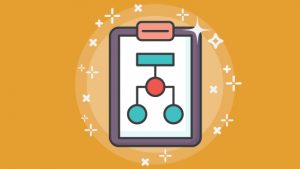Feeling overwhelmed by the drastic and widespread amount of change worldwide? You’re not alone.
Individuals and businesses alike are still getting used to embracing the new, especially when it comes to the digital disruption of the workplace. Although it’s worth noting that digital disruption isn’t a new concept.
Emerging technologies have been influencing and revolutionising our ways of working for a long time now. But what the pandemic has done is shown us that change can be implemented at an accelerated rate when needed.
Having gone through this as a global community, there are many that believe that embracing this new pace of change and embracing new technologies will be what sets businesses apart from their competitors, and what determines their potential for long-term success. As such, embracing change when it comes to technology is crucial for long-term success and adaptability.
But fear not!
Despite its rather unsettling name, digital disruption presents us with a positive opportunity to do things in different and potentially more efficient ways. It also reminds us of the urgent need to upskill in new technologies in the digital age. This is even more relevant today than ever before.
What Is Digital Disruption?
Digital disruption refers to the transformative impact of new digital technologies and innovative business models on existing industries, goods, services, and organisational structures. It’s not an overnight phenomenon; rather, it represents a gradual shift that gains momentum as digital technologies evolve exponentially.
Examples of Digital Disruption
- Streaming Platforms vs. Traditional TV Broadcasting:
- Streaming services like Netflix, Amazon Prime Video, and Hulu have revolutionised how we access and consume content.
- Traditional TV networks, which once held a monopoly on broadcasting rights and viewership, now face fierce competition from these digital disruptors.
- Consumers can watch content on-demand, receive personalised recommendations, and enjoy ad-free experiences.
- Apple’s iTunes Ecosystem:
- Apple disrupted the music industry with iTunes and the iPod.
- The iTunes store allowed users to purchase and organise music digitally, challenging the traditional model of physical CDs.
- The iPod transformed how people listened to music, leaving other alternatives behind.
- Kodak vs. Digital Photography:
- Kodak, a photography giant, failed to adapt to the digital era.
- Smartphones and photo-sharing platforms like Instagram disrupted the photography industry.
- Digital photography democratised access to capturing and sharing moments.
- Book Retailers vs. eBook Readers (Kindle):
- Traditional bookstores faced disruption from eBook readers like the Kindle.
- Digital books offered convenience, portability, and a vast selection.
- The shift from physical to digital reading transformed the publishing landscape.
- Uber vs. Taxi Industry:
- Uber disrupted the transportation sector by introducing ride-sharing.
- It challenged the traditional taxi model, offering a more convenient, efficient, and cost-effective alternative.
- Digital technologies democratised access to transportation services.
Embracing Change
Change is constant, especially in the digital age. Businesses must remain flexible and open to innovation. While adapting to digital disruption can be challenging initially, embracing change leads to growth and resilience. Remember: Practice makes perfect, and staying ahead of the curve ensures long-term success!
You may find your business struggles to keep up with best practices and new ways of doing things at first, however, practice makes perfect, so the more your business embraces change, the easier it will get.
What Does Digital Disruption Mean For Your Business?
Digital innovation changes the nature of existing jobs, often amplifying and diversifying the scope of tasks and responsibilities, such as problem-solving, multi-tasking, and collaboration. This inevitably increases the range of skills and knowledge expected (if not required) from employees.
To respond to these changes, businesses should firstly evaluate existing roles and ensure that these are all relevant and in line with the direction of the business moving forward.
The position descriptions should also be exhaustive and comprehensive for transparency and clarity between employer and employee. Why? Because a business’s structural framework is arguably the first thing to be affected by changing work patterns.
The next step is to focus on the people that inhabit this framework to make it a business. Implementing training or upskilling solutions is a crucial measure to get the most out of your staff. It also sends a positive message on both an internal and external level, demonstrating your brand’s eagerness to evolve and grow and an emphasis on collaborative effort.
Is Digital Disruption Limited to Specific Industries?
It’s easy to assume that the impact of digital technologies is confined to certain sectors like IT, media, and heavy industries such as manufacturing, construction, and mining. However, real-world examples demonstrate that no industry remains immune to digital disruption. Here are additional instances:
- Retail and E-Commerce:
- Traditional brick-and-mortar retailers face competition from online marketplaces like Amazon.
- E-commerce platforms disrupt supply chains, inventory management, and customer experiences.
- Healthcare:
- Telemedicine and health apps are reshaping patient-doctor interactions.
- Wearable devices and AI-driven diagnostics enhance healthcare delivery.
- Financial Services:
- Fintech companies challenge traditional banks with digital payment solutions.
- Blockchain technology transforms financial transactions and security.
- Education:
- Online learning platforms disrupt traditional classroom settings.
- Massive Open Online Courses (MOOCs) democratise education globally.
- Transportation and Logistics:
- Ride-sharing services like Uber and Lyft revolutionise transportation.
- Supply chain management benefits from IoT sensors and data analytics.
- Hospitality and Travel:
- Airbnb disrupts the hotel industry by connecting travellers directly with hosts.
- Travel booking platforms simplify trip planning.
Digital disruption isn’t limited to specific sectors; it’s a pervasive force that demands adaptability and innovation across all industries. As such, employers and employees should aim to focus on skill sets and qualifications or training sessions that can be applied across multiple industries. This will also help to address the issue of converging sectors and better equip companies to remain ‘future-proof’ down the track.
What Does Digital Disruption Training Involve?
Preparing your business for the future means preparing your team for the future.
Across major industries, this Swinburne Research Report summary identifies a range of key skills to enhance as part of your business’s digital disruption training.
Primary digital skills include:
– Industry programming and software engineering
– Data analytics
– Visualisation
– IoT (Internet of Things)
– IT Architecture
– Security
Project-based skills include:
– Product management
– Multi-project management
– Supply chain and support services
– Logistics
Soft or personal development skills involve:
– Creativity
– Design
– Innovation
– Leadership
It is important to note here the value of both technical and non-technical skills, as being flexible across industries is arguably as desirable as being savvy with technology.
Digital Disruption: Friend, Not Foe
Throughout history, we have witnessed hesitation and reluctance when faced with drastic changes. But in our current landscape, where change permeates our daily work and life processes, we must adapt.
Digital disruption is not an adversary; it’s a modern reality. Even during challenging times, it persists as a force for transformation. The key takeaway is that technological shifts, while posing ongoing challenges to businesses, also provide an opportunity for active and critical reassessment of processes.
Ready to navigate digital disruption? Contact our HR specialists today to explore innovative solutions and stay ahead of the curve!













 April 30, 2024
April 30, 2024 






